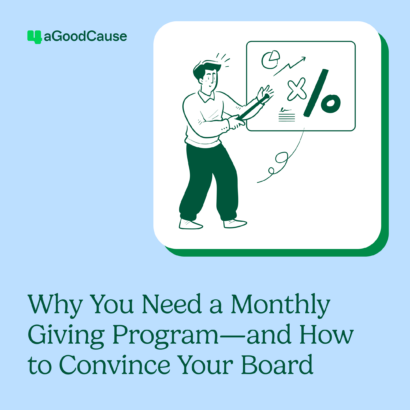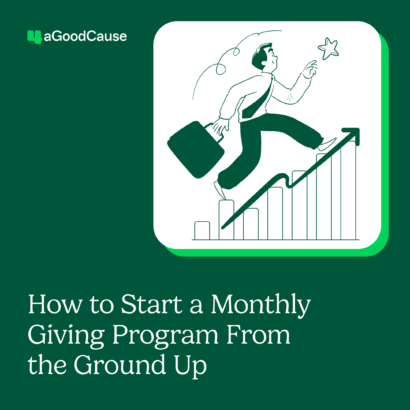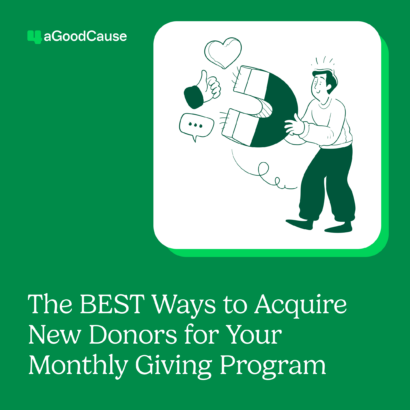The Global Trends in Giving Report notes that social media is the number one way that online donors are most inspired to give—more than email, websites or even print communication. And if that wasn’t a helpful stat to tell your executive director the next time you meet, most donors (87%) who make an initial donation from a referring social media source make their subsequent donation via social media as well (The State of Modern Philanthropy Report).
Social media marketing for nonprofits is not only important, but it’s also a necessary component of your online giving communication plan. To ensure your followers know who you are and about the opportunities to give, follow these five tips to create effective social media donor engagement and conversions.
Be consistent
On the surface, consistency matters because you’re building a relationship. And we all know those people who come in and out of our lives at the most opportune times for them – when they need something. At a minimum, treat your social media channels as you would any donor relationship; creating consistent touchpoints and content to engage them all year long.
From a technical standpoint, posting consistently on social media gives your accounts a better chance to be seen in your followers’ feeds. Consistent posts prove to the algorithms that you are a real account. And, once your users start to see more content from you, they start to engage with you more, their friends start to see the posts, and they start to engage with you more – you get the picture. It’s a cycle that you need to be a consistent part of to be successful.
Diversify content
The best social media accounts take audience preferences, needs, and likes into account. They do this by engaging followers with different types of content throughout the week. First, it’s more likely that your followers will see this content because it’s diversified (and social media algorithms love that) and second, it’s important that you aren’t always asking your followers for something—that you are telling your story and providing a dialogue about who you are and what you do. Content such as:
- Success stories and testimonials
- A day-in-the-life posts
- Infographics that depict impact
- Reels or videos that showcase your events or teamwork
- Highlights of those impacted by your services
- Updates or opportunities for P2P campaigns
Sprinkle in soft asks and hard asks throughout the months when it’s appropriate to do so. Have a capital campaign coming up? Craft content that both tells a story and makes the ask. Getting toward the end of the year? Add in posts that talk about last-minute gifts, year-end donations and how those final gifts still make a difference to your organization. You can also check out these fun social media content ideas for inspiration.
Use channels appropriately
Think about cross-promoting content on all your social media channels but do so in a way that is appropriate for that channel. For instance, you need to have great imagery and visual content to be successful on Instagram. You need to watch your character counts on Twitter. Set up your bios and about sections on each of your social media channels to link back to your online donation pages. Watch the content you post to ensure links are clickable and you aren’t asking users to manually type in URLs to make gifts online (e.g., you can’t put hyperlinks in an Instagram post but you can link it in an Instagram story).
Engage and monitor
If you’re going to use social media to connect with your donors, you need to ensure you have a process to monitor these conversations, notifications and results. The last thing you want is to give the impression that you’re only there to collect donations (and ignore your followers). Smaller nonprofit teams can work together to assign key staff members roles throughout the week or month to take turns monitoring social media notifications.
Make the ask (and make it easy to act)
The ask doesn’t always have to be donation-inspired. Great ROI using social media also includes volunteer sign-ups and event registrations along with donations. The best rule of thumb is to make your ask easy to understand and easy to access. The fewer clicks (or work) for your audience, the better. When asking visitors to do something, make your links easy to see, think about scannable content and, if it’s something that requires multiple steps, outline those steps will bullet points, numbers or in a visual format that gives your users all the information they need to do what you’re asking them to do.
Last, while many social media channels such as Meta (Facebook, Instagram) and TikTok have made it easier than ever for nonprofits to link their accounts to donation platforms and giving tools built right into the platform, be careful if you choose to use those features. Many times, you will need to wait for funds to be transferred to your account or even pay higher processing fees than you would by linking directly to your online donation page found on your organization’s website.



